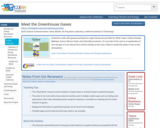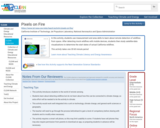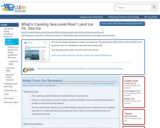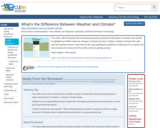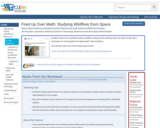
Students learn how scientists assess wildfires using remote sensing, then use some of the same techniques to solve grade-level appropriate math problems.
- Subject:
- Applied Science
- Atmospheric Science
- Career and Technical Education
- Ecology
- Environmental Science
- Environmental Studies
- Life Science
- Physical Science
- Material Type:
- Activity/Lab
- Provider:
- CLEAN: Climate Literacy and Energy Awareness Network
- Provider Set:
- CLEAN: Climate Literacy and Energy Awareness Network
- Author:
- California Institute of Technology
- Jet Propulsion Laboratory
- National Aeronautical Space Administration
- Date Added:
- 11/29/2020
